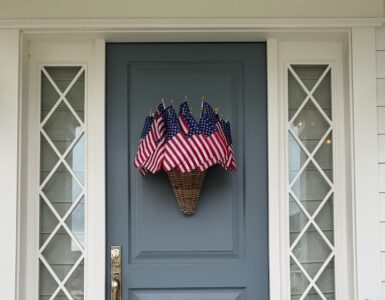Add safety, security and decorative lighting to the outside of your home
Lighting up the exterior of your home increases safety, welcomes visitors, enhances the appearance of landscaping and makes it easy to enjoy a beautiful night in the comfort of your porch or patio. Timers activate lights when you’re not home to boost security and provide a pleasant, lighted environment to come home to. Installing exterior lights can be done in a relatively short period of time and with minimum fuss, making for a fulfilling home improvement project. You’ll need to make a few decisions about placement and the types of lighting and fixtures you want to use before you begin installation, so keep the following questions in mind as you shop:
· What is the primary purpose of the lighting?
· Where will you place lights? How frequently will they be used?
· Do you want to add sensors or timers?
· Which styles best suit the areas where they will be installed?
· What type of lighting is best suited to the area?
Purpose, Placement and Special Considerations
When installing exterior lights, consider your objectives. What type of lighting you choose will help you create different effects. For example, floodlights can be used as a deterrent to prowlers and as a safety feature to prevent accidental tripping on stairs or uneven pavement. If you want to subtly accent your landscaping or highlight an architectural feature on your front porch, you’ll want to choose a different solution. Once you’ve determined which types of lights will work best, you’ll need to look at a few key considerations before you get started.
Security and Safety: Security and safety are two of the most important purposes of exterior lighting. Placing flood lights in key areas — above the garage, near side entrances or in your backyard — discourages intruders by illuminating all pathways to your house, while giving you a clear view of obstacles in your driveway and yard so you don’t trip when returning home after dark. Motion sensors and timers further enhance safety by allowing you to customize when and how lights turn on. You’ll want to position flood lights high enough that they cast a wide cone of light and are not easily accessed from the ground.
· Position flood lights at least 9′ off the ground to make them difficult to reach or disable
· Motion sensors and timers increase effectiveness and add extra security
· Choose placement that provides maximum light and illuminates high-traffic areas
Decoration: Adding lights to the outside of your house can highlight and accent architectural features and make guests feel welcome. Well-lit doorways prevent you and your visitors from stumbling over chairs or welcome mats on the front porch. Different fixture styles enable you to create a unique look and feel that complements your home’s exterior. Use lighting around a patio or pool to create a festive or intimate atmosphere, or install post lights along your driveway for added style.
· Decorative lights add ambiance and style while increasing safety
· Pendant, post and wall lanterns present a wide array of lighting options
· Create different atmospheres in your front and back yards with the right lighting
Landscape Lighting: Landscaped areas add value to your home and provide unique spaces to gather with friends and family members. With the right illuminating effects your landscaped yard will take on a whole new dimension of elegance while benefiting from enhanced safety that makes it easier to enjoy those areas after the sun goes down. Use mushroom lights to illuminate walkways and steps and well lights around flowers, shrubs and bushes for a beautiful appearance at night. Using lights in and around landscaping will also help you spot nocturnal animals, such as skunks and raccoons, so you can keep pets safely inside until they’re gone.
· Landscape illumination creates shadows and adds dimension
· Globe, tier and entrance lights each provide unique looks
· Use uplighting and downlighting for different effects
Seasonal Controllers: If you don’t want to reset your timers each time the seasons change, consider purchasing lights with seasonally programmable controllers. These units adjust activation times based on changing amounts of daylight so you don’t have to worry about making continual adjustments.
LED: Manufacturers are increasingly turning to LED (light emitting diode) lights because of their tremendous energy efficiency. LED lights are waterproof, can be dimmed and withstand impacts. They may require a slightly larger up-front investment, but they last longer than any other type of light source and come in a variety of colors. Solar LED lights are available as well.
Fiber Optics: Running fiber optic cables along walkways or gardens provides excellent low-voltage lighting without the use of heat or electricity, reducing the risk of safety and fire hazards.
Spotlights: Spotlights can be used to highlight a specific feature, such as a fountain, pond or sculpture. Look for weather-sealed lights to ensure long-lasting effectiveness














Add comment